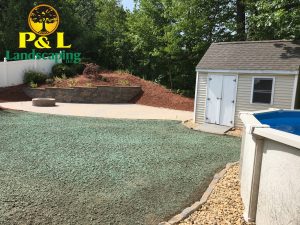Fall Lawn Seeding Guide

Lawn Seeding
Fall lawn seeding is a common practice amongst homeowners to establish or rejuvenate a healthy and lush lawn.
The Fall season provides ideal conditions for grass seed germination and root development due to cooler temperatures, increased moisture, and fewer competition from weeds.
Below is a step-by-step guide on Fall lawn seeding. If you need help, please contact us and we’d be happy to answer any questions for you.
- Prepare the Lawn: Start by removing any debris, dead grass, and weeds from the lawn. You can use a rake or a dethatching machine to loosen up the top layer of soil. This will help the new seeds make better contact with the soil.
- Soil Testing: Consider getting a soil test done to determine the pH level and nutrient content of your soil. Based on the results, you can make any necessary adjustments with lime or fertilizer to create optimal conditions for seed growth.
- Choose the Right Grass Seed: Select a high-quality grass seed blend suitable for your region and the conditions of your lawn (sunlight exposure, soil type, etc.).
- Seed and Fertilize: Spread the grass seed evenly over the prepared soil using a broadcast spreader. It’s recommended to apply a starter fertilizer at this stage to provide essential nutrients for the new grass seedlings.
- Rake and Water: Use a rake to lightly cover the seeds with a thin layer of soil or compost. This will protect the seeds from birds and help retain moisture. After seeding, water the area thoroughly but gently to ensure the soil is evenly moist. Keep the seeded area consistently moist until the new grass becomes established.
- Mow and Maintain: Once the new grass reaches a height of about 3 inches, you can start mowing it. Set your mower to a high setting to avoid cutting the grass too short, which can stress the young plants. Continue regular watering and maintenance as needed to encourage healthy growth.
- Weed Control: Keep an eye out for weeds, especially during the early stages of lawn establishment. You can use hand pulling or spot treatments with herbicides to control weeds without harming the new grass.
- Avoid Heavy Traffic: Try to limit foot traffic on the newly seeded area until the grass becomes well-established. This will help prevent damage and ensure the success of your fall lawn seeding efforts.
By following these steps and providing proper care and attention, you can achieve a vibrant and thriving lawn the following Spring. Remember that the success of fall lawn seeding largely depends on consistent watering, proper seed selection, and adequate soil preparation.
If you need help with this or anything dealing with your yard, please feel free to contact us and we’d be happy to answer any questions.